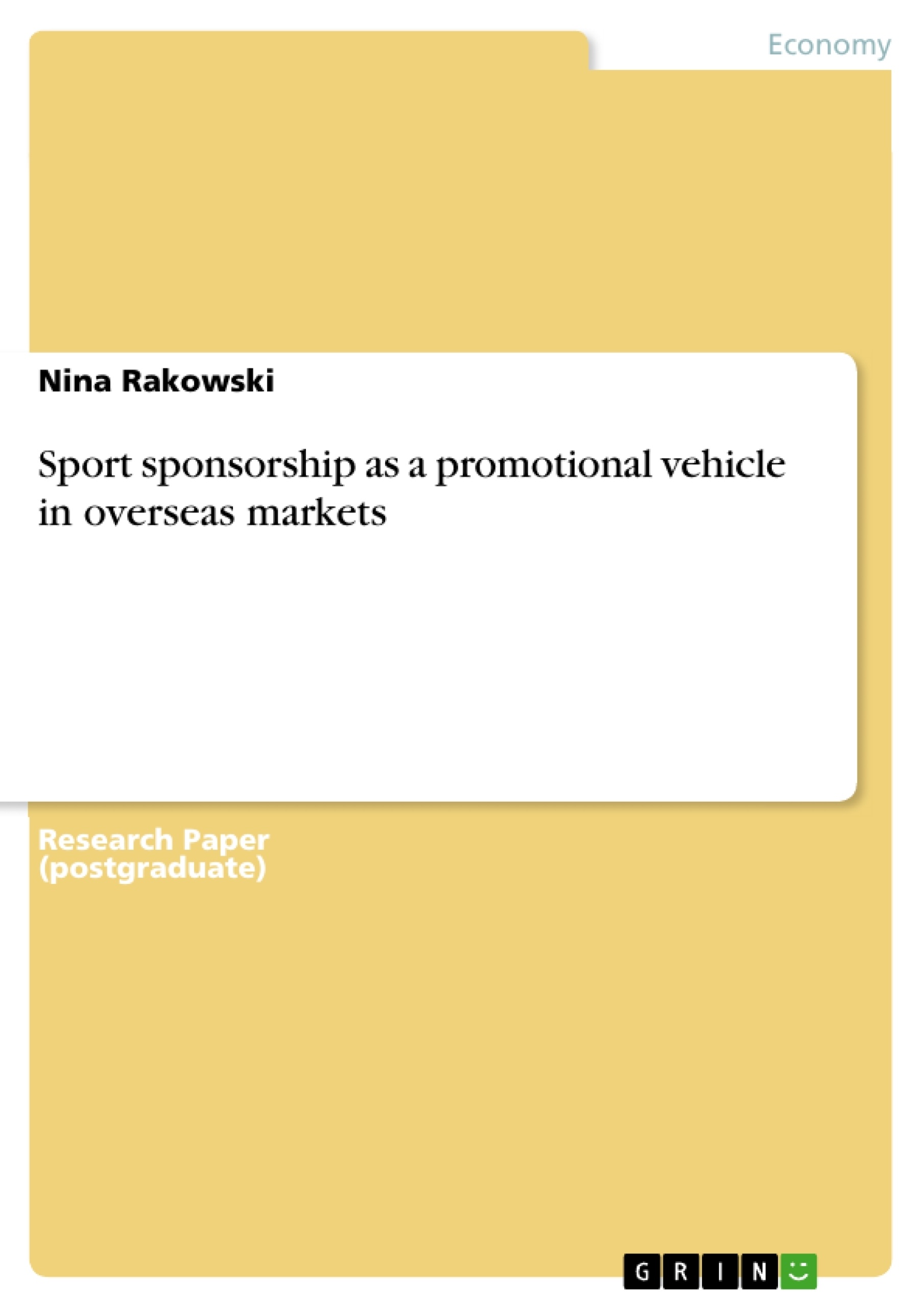Excerpt
Introduction
In the past ten years the Australian sports sponsorship industry has seen significant changes. The Olympic Games in Sydney in 2000 have been the sport sponsorship entry for a lot of Australian companies.
Australians have a very high interest in sports. Sweeney Sports Research found that somewhere between 98% and 99 % of 16-65 years of age Australians are interested in sport. By interest they defined that people participated personally in sports, watched it on television as much as possible, listen to the radio as much as possible or read about sports in newspapers on a regular basis (Hirons, 2002).
This is the reason why sport in Australia can be seen in all traditional media such as print, television, magazines, radio, newspapers but also in new media such as the internet.
According to Hirons, in 2000 a lot of sponsorship agreements expired naturally and since then organisations have changed their strategies in many ways. As an example, Uncle Tobys decided to withdraw from Iron/Ocean Man. Kellogg now makes a lot of sponsoring of lifesaving and invests more and more in community based initiatives. Ford withdrew from the tennis sponsorship and was replaced by Kia. Holden and Ford invested heavily in motor sport. Fosters lost the Melbourne Cup which is now sponsored by Tooheys.
Additionally, the stadium sponsorship trend is increasing more and more as companies try to avoid the cluttered sponsorship market. Stadiums nowadays have names such as Telstra, Vodafone, AAMI, etc (Hirons, 2002).
The sponsorship market continues to grow. The current dollar value estimates in Australia put the market at around AUS $1.6 billion whereas the global sponsorship spend is worth AUS $36 billion (IEG, 2003, 2005) (S-Comm, 2006).
In the following chapters the author presents an overview of sport sponsorship, gives a detailed analysis of what a company needs to consider, the issues related to sponsorship and how to minimize them. Examples will be given in order to link theoretical background with practical examples to achieve a level of full understanding for the reader.
What is Sport sponsorship?
Definitions:
A widely used definition of sponsorship was given by Pope (1998):
Abbildung in dieser Leseprobe nicht enthalten
Objectives for companies to make use of sport sponsorship
The following objectives were found to be important for sport sponsorship. Pope summarized all objectives in the following table.
Abbildung in dieser Leseprobe nicht enthalten
(Pope, 1998)
Cornwell (1995, p.17) argues that the two most often mentioned benefits of sport sponsorship are awareness (for either a brand, product or the company itself) and image building (for the brand, product, or company itself).
However, Abratt et al (1987), argue that “an increase in sales is always the ultimate goal” of sponsoring (p.306).
There are indeed some examples in which companies used sport sponsorship successfully to increase sales, however it is not recommended by the author of this work to set ‘increase sales’ as an objective. The increased sales should be more regarded as a positive by-effect for successful sponsorship by achieving another objective such as to create brand awareness.
Such positive by-effects can be seen in the following examples:
Abbildung in dieser Leseprobe nicht enthalten
Evaluation of sport sponsorship
Authors such as Arani (1992) and Sleight (1989) discuss that the evaluation or the measurement of how successful the use of sport sponsorship for a company is, is strongly dependent on the objectives set by the company.
Pope and Voges (1994) found out that the length of a sponsorship is directly linked to the setting of objectives and the evaluation taken. This means that shorter sponsorship agreements, which are defined as being less than three years, occurred most among those companies which did not set objectives in advance and did fail to evaluate them after the event.
Therefore it can be said that the setting of objectives is an important task the company needs to do before signing any sponsorship agreements. But even of greater importance is the evaluation after the event, which indicates how successful or unsuccessful the sponsorship was.
Figure 1 in the appendix on page 11 shows the ideal approach for companies that decide to take sport sponsorship into their promotional mix.
[...]
- Quote paper
- Nina Rakowski (Author), 2008, Sport sponsorship as a promotional vehicle in overseas markets, Munich, GRIN Verlag, https://www.grin.com/document/117660
Publish now - it's free






















Comments